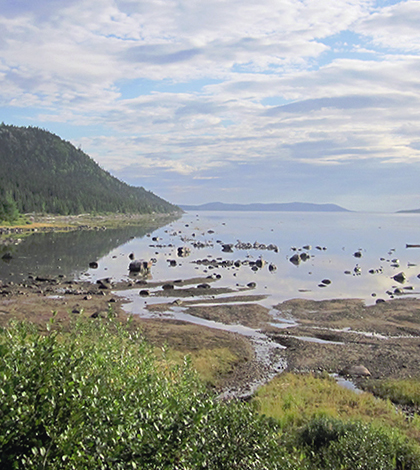A Hydroelectric Reservoir’s Effects On Arctic Methylmercury Production

Lake Melville from Rigolet. (Credit: Prentiss Balcom)
A recent study shows that when low-density freshwater from the Churchill River flows into Lake Melville’s high-density saltwater from the Labrador Sea, a shelf is created by the difference in water densities. This shelf provides a place where carbon-rich debris called marine snow can accumulate and serve, along with phytoplankton, as a food source for methylating bacteria and grazing zooplankton.
Scientists used to think that sediment on the bottom of the lake was the greatest source of methylmercury. But since this study, researchers know that oxygen-rich surface waters, where methylating bacteria accumulate, constitute the new greatest source. This becomes a problem for people who fish and hunt around Lake Melville because methylmercury is a potent neurotoxin that bioaccumulates.
The team also did soil flooding experiments and found that flooding inland soil resulted in a large peak in methylmercury production compared to flooding soil from the lake’s shore. They concluded by saying that their estimate represented a lower bound on methylmercury concentrations because an energy company planning a hydroelectric reservoir will remove most trees.
Top image: Lake Melville from Rigolet. (Credit: Prentiss Balcom)





0 comments